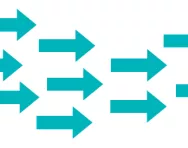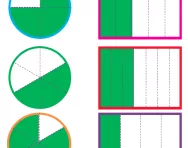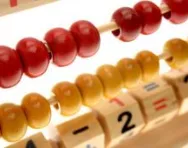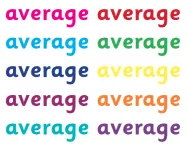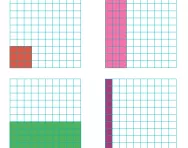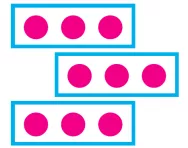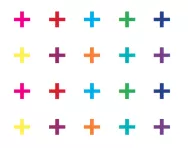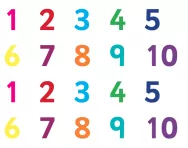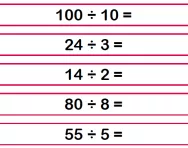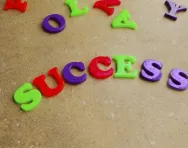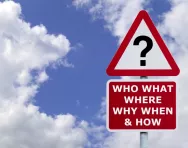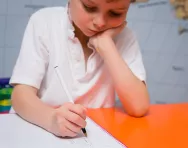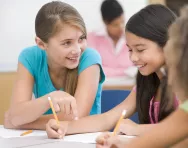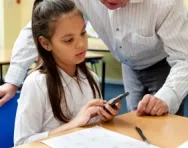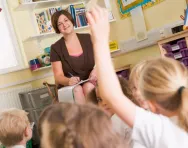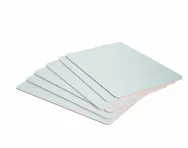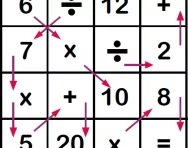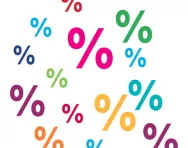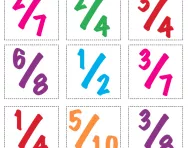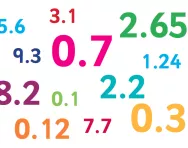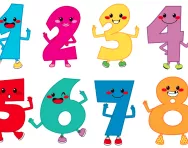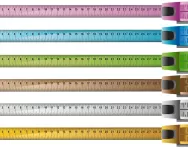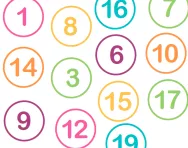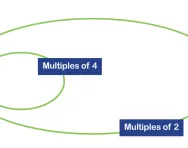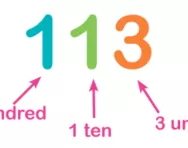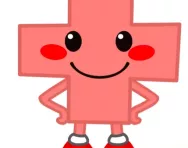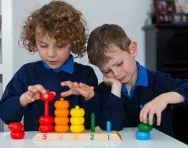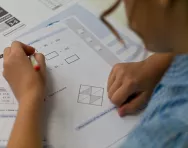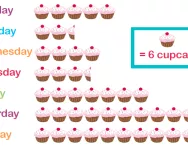Year 4 Maths articles
What is ascending order?
We explain what ascending order means, how children are asked to sort into ascending order in primary school and give examples of how the concept might relate to numbers, dates, decimals or alphabetical lists.
What is the denominator?
We explain what the denominator of a fraction is and give examples of how the concept is taught in primary-school maths, as well as explaining fractions equivalence and the relationship between the numerator and denominator.
What is the numerator?
We explain what the numerator of a fraction is and give examples of how the concept might be taught in Key Stage 2, as well as explaining fractions equivalence and the relationship between the numerator and denominator.
What is the lowest common denominator?
We explain what the lowest common denominator is and how to find it and use it to compare different fractions, as well as giving examples of how the concept might be taught to your primary-school child.
What is the lowest common multiple?
We explain what the lowest common multiple is and give examples of how the concept might be taught to your primary school child.
What is the highest common factor?
We explain what the highest common factor is and give examples of how the concept might be taught to your primary school child.
What is the average?
We explain what the term average means in maths, how to find the average of a set of data (and how children are taught to do it in primary school), and what a mean average is.
What are decimals?
We explain what decimals are and how the concept is explained to primary-school children, as well as how they are taught to relate decimals to money and measurement, the equivalence between fractions and decimals, partitioning, rounding and ordering decimals and adding, subtracting, multiplying and dividing decimals.
What is repeated addition?
We explain what repeated addition means, how it is taught in school as a foundation of multiplication understanding and techniques that teachers use to help children grasp the concept.
What is a number sentence?
We explain what a number sentence is and how primary-school children are taught to write number sentences (or fill in gaps in number sentences) in KS1 and KS2.
What is a sum?
We explain what a sum is and how children are taught to understand the term when it appears in mental maths tests, word problems or investigations.
What is an integer?
We explain what an integer is and how to explain the concept to your child, as well as offering some puzzles involving the term 'integer'.
What are division facts?
We explain what division facts are, how they are taught in primary school, and share some fun games that you can try at home to make this knowledge stick.
What is a product?
In maths the product of two numbers is the result you get when you multiply them. We explain how children are taught multiplication vocabulary in KS2 and what kind of problems they might be asked to solve,
What is a success criteria / WILF?
Find out what success criteria (also known as the 'WILF') are and how your child's teacher will use success criteria to boost learning focus.
What is a Learning Objective / WALT?
Heard your child talk about their LO, or their WALT? Teachers use learning objectives to help children understand what is expected of them in the classroom. Find out what a learning objective (or WALT) is and how learning objectives are used in primary school.
What is a DUMTUM?
Find out what a DUMTUM is and how this technique will help your child to set out their work correctly.
What are talk partners?
Find out what a talk partner is and why having a talk partner will benefit your child's learning in the classroom.
What is 'scaffolding' learning?
Find out what 'scaffolding' learning means and how teachers use this technique in the classroom to help children master different skills.
What are interactive whiteboards?
Find out what interactive whiteboards are and how they enhance learning in the classroom.
What are mini-whiteboards?
Find out what mini-whiteboards are and how they enhance learning in the classroom.
12 great benefits of maths challenges
Maths activities could give your child’s learning a boost in many ways, and help them engage with numbers (and enjoy it!) from a young age. Lucy Dimbylow offers 12 reasons to give number puzzles a go today.
Teachers' tricks for percentages
Percentages can seem like a tricky topic to tackle if you're not too sure about your maths skills, but by following our teachers' tips and suggestions you'll feel homework-confident in no time.
Teachers' tricks for multiplication
Can you multiply using the grid method, or draw a multiplication calculation as arrays? Find out more about multiplication and how it’s taught in schools today with our teachers' tips, tricks and methods, explained for primary-school parents.
Teachers' tricks for subtraction
Help your child become subtraction savvy with our teachers' tips on methods, practical resources, vocabulary and more. From subtraction songs and subtraction story problems to column subtraction, Phoebe Doyle offers some practical homework help for 'taking away'.
Teachers' tricks for fractions
From halves in quarters in KS1 to equivalent fractions in KS2, primary teacher Phoebe Doyle offers some insiders’ tips to help you help your child at home, plus details of fraction walls, hundred charts and other useful maths resources.
Best time-teaching products
Great toys, books and resources to help your child learn to tell the time on analogue and digital timepieces, from clock face recognition to estimating time differences on the 24-hour clock.
Teachers' tricks for division
Primary school teacher Phoebe Doyle has some tips and tricks to help your child with division work at home, offering an explanation of strategies using in school today as well as some useful practical exercises to try.
Teachers' tricks for decimals
Understanding decimals is vital for real-life, everyday maths. Phoebe Doyle offers some teacher tips to help your Key Stage 2 child understand what decimals are and how to use this knowledge in calculations.
5 number and counting skills primary-school children need
Numbers are all around us, almost from birth! Teacher Phoebe Doyle looks at counting, a fundamental aspect of mathematical understanding, to help your child grab the basics (without confusion!) from day one.
Teachers' tricks for shape, space and geometry
Throughout primary school children learn about the properties of the shapes in the world around them (primary geometry, in other words). Phoebe Doyle offers some insiders’ tips on helping them master shape and space maths targets.
Teachers' tricks for weights and measures
Weights and measures can be a really fun area of maths to teach in school – but one that can leave parents unsure of how to help at home. Teacher Phoebe Doyle has some hints and suggestions.
What are number bonds?
If your child is in Key Stage 1, chances are they'll have told you they're learning 'number bonds'... but what are they? Teacher Alice Hart explains why children are taught these number pairs, and how you can help your child practise them at home.
What is a Venn diagram?
Venn diagrams are often used to sort data in primary school. Find out what parents need to know about how to complete and read a Venn diagram correctly, plus how they're used in the classroom in KS1 and KS2.
What is place value?
A good understanding of place value (the value of each digit in a number) is vital in primary-school maths. Our parents' guide explains how your child will be taught about units, tens, hundreds and thousands with number lines, arrow cards and more, as well as outlining how place value is used to help children visualise calculations.
What is subtraction on a number line?
Also known as the jump strategy or complementary addition, subtraction on a number line is a common technique in KS1 and KS2 maths, useful for helping children visualise that subtraction is finding the difference between two numbers. Teacher Alice Hart explains the method and how it's taught in primary school maths.
Teachers' tricks for addition
Help your child with their addition work, from the basics in Reception to calculations in KS1 and KS2, with some teachers' tricks to help the learning stick.
Does my child have dyscalculia?
What are the signs to look out for if you think your child might have dyscalculia or 'number blindness', and what can be done to help?
7 strategies to help defeat children’s fear of maths
What does it mean if your child has a fear of maths, and what can you do to help them get over it? TheSchoolRun offers a step-by-step plan to help you boost your child's confidence – and your own.
What is a pictogram?
Pictograms are introduced in Year 2 as a simple and engaging introduction to bar charts. We explain what your child needs to know about pictograms and how to read and create them, as well as explaining when and how they're taught.
